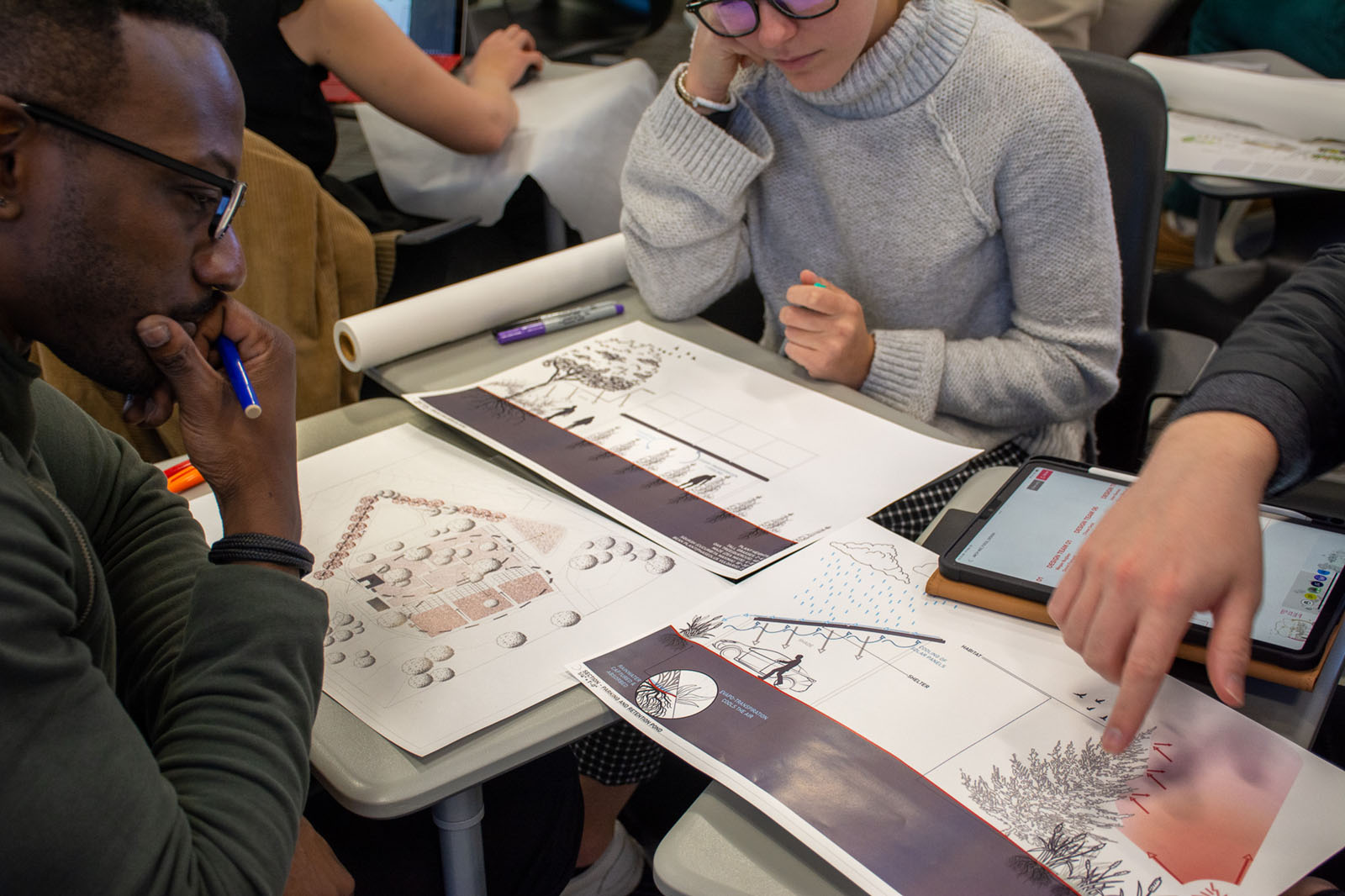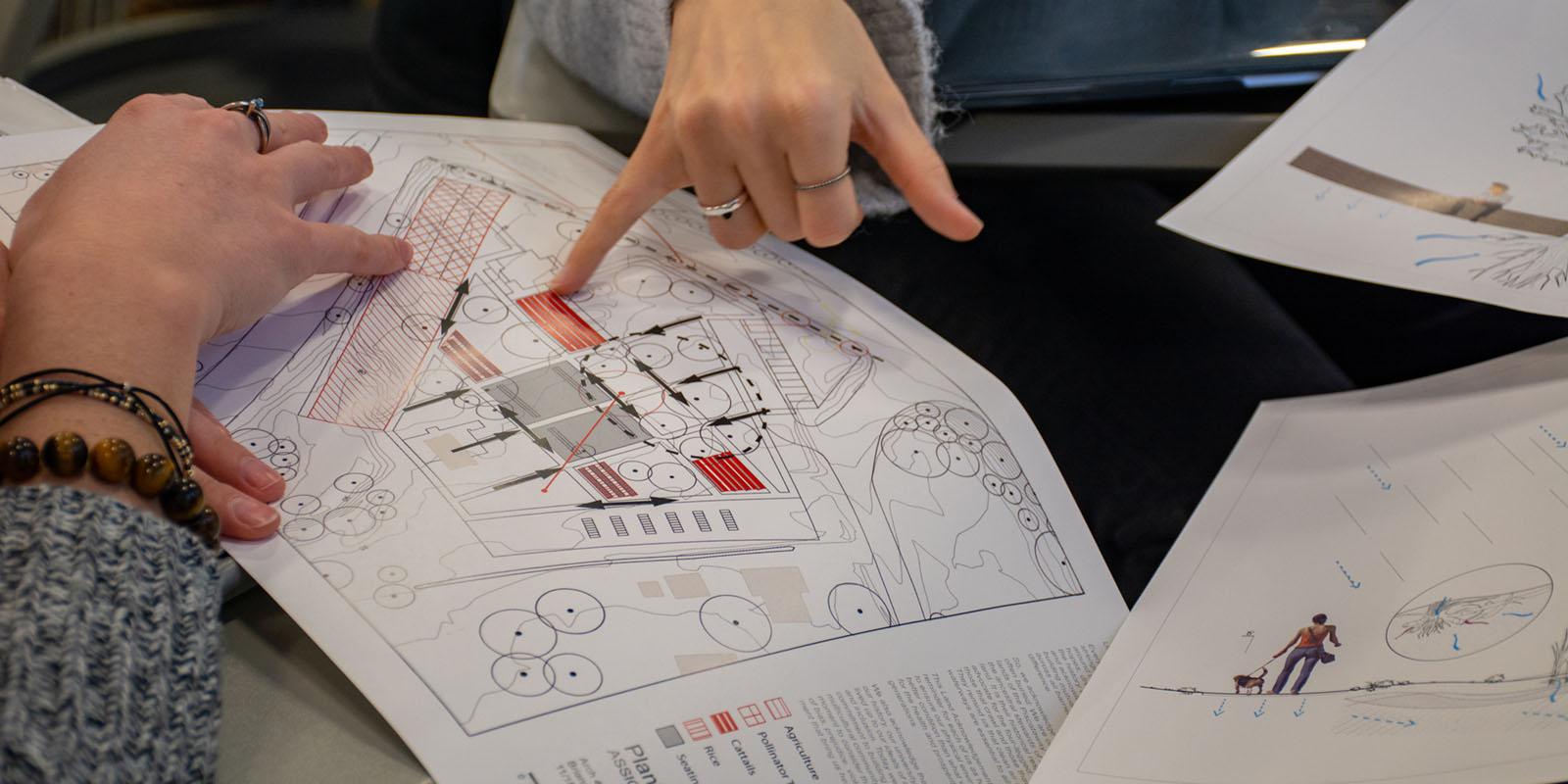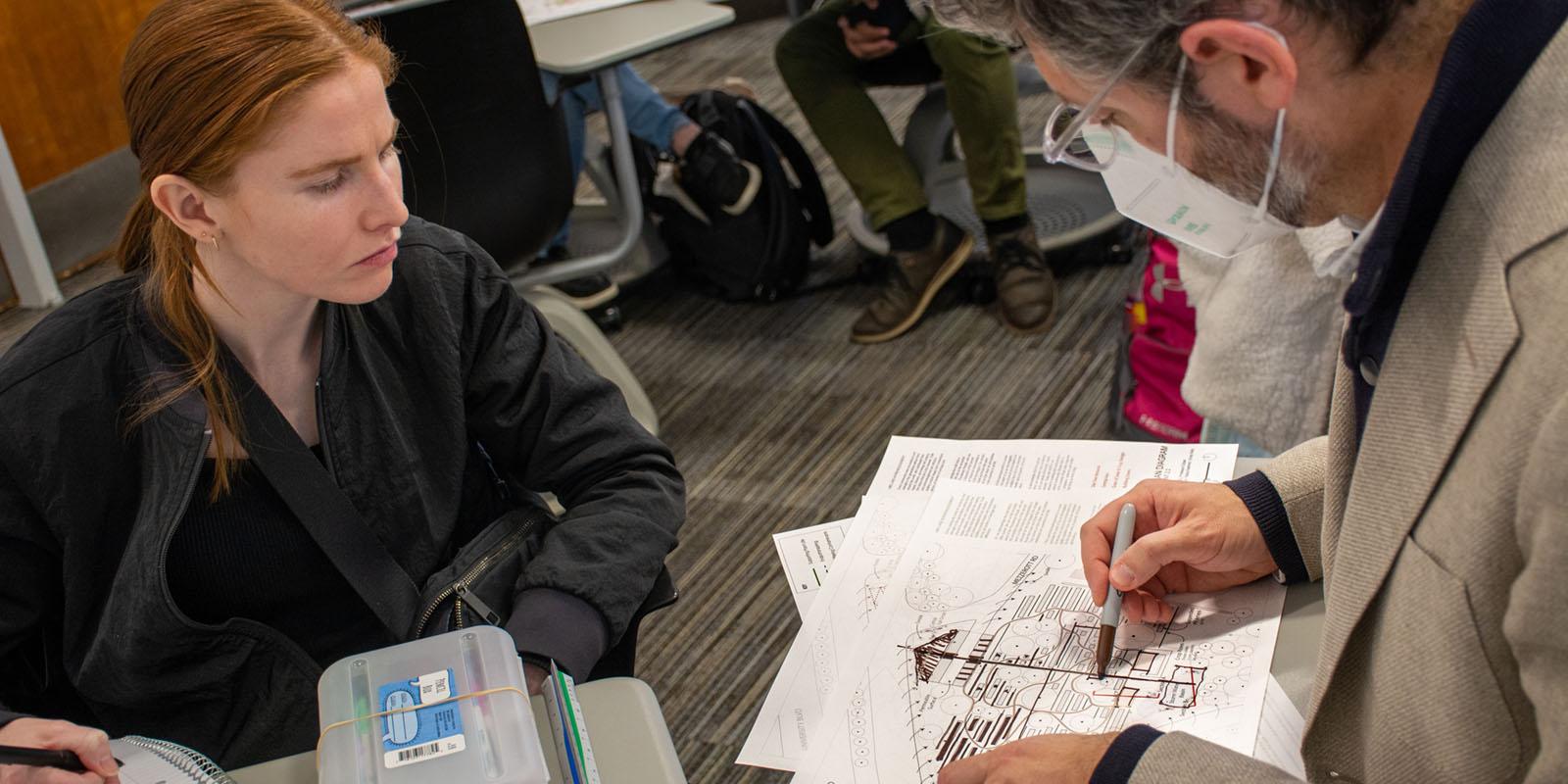Architecture students designing solar panel-shaded permeable parking lots for their project site on the edge of campus were stuck on how to buffer the thrum of traffic along University Boulevard, until Assistant Clinical Professor Michael Ezban offered a low-tech intervention: cattails.
Used for centuries as an insulating building material by the Piscataway people, Typha latifolia is a natural marvel that can also absorb rainwater, contain polluted runoff and create habitat for insects and animals.
It’s one example of the strategies that students are exploring this semester in a site analysis and design course by infusing centuries-old Indigenous knowledge into contemporary landscape and architecture for an increasingly fragile planet—and the complex ecosystems that call it home.
In conventional Western construction, buildings are objects that sit on a landscape but rarely participate mutualistically with the living systems around them. Indigenous Knowledge, Ezban said, holds the formula for more sustainable, regenerative design. Drawing on readings, research and shared perspectives from members of the Piscataway and Nanticoke tribal communities, the course illustrates various ways that humans are entangled in the web of life that make up a site and how topographies, ecologies and shelters can be mutually beneficial.
“A site is anything but empty before we do any work on it; even the average American lawn is teeming with life,” said Ezban. “The idea behind this course is to adjust our teaching and surface some of these Indigenous perspectives that emphasize humans’ responsibility to the land we cohabit with other beings.”
Students are applying the tools and processes shared during the course to develop a high-performance landscape that intertwines with the water, solar, food and waste systems of the University of Maryland’s winning entry in the 2017 Department of Energy Solar Decathlon, a house called reACT, and one of its predecessors, LEAFHouse, currently co-located at the corner of University Boulevard and Paint Branch Drive. In their designs they are experimenting with agri-solar concepts, which co-locate pollinator-friendly agriculture under photovoltaic (PV) panels; terrain changes that can simultaneously funnel water, buffer traffic noise and support agriculture; and planted parking landscapes that filter water and reduce the heat-island effect.

“As designers, we always try to incorporate synergies with the natural environment, but in this course, it’s been our full focus,” said David Fischetti ’23, who with classmate Megan Bugbee ’23 is using a pollinator meadow to transition visitors from the site’s parking lot to the building. “It has opened my eyes to new possibilities.”
Funded by a 2022 UMD Teaching and Learning Grant, the class is one of 20 new and updated courses across campus incorporating Indigenous perspectives to address the impacts of climate change on the built environment. The courses are grounded in work and tribal relationships nurtured during the development of the reACT house and continued through the university’s reACT Think Tank, which explores environmentally and socially minded solutions to research challenges; Think Tank members from the Piscataway and Nanticoke tribes have consulted on architecture courses over the past several years. Ranging from water systems to adaptive reuse, each course forwards methods in regenerative design, resource conservation and environmental impact.
“One of the most powerful lessons I have learned from my elders is that everything you do has an impact on something else; we are all connected,” Nanticoke tribal member Kyle Harmon told students last month. “It’s great to have spectacular designs and gorgeous buildings, but it’s a means to an end.”
Students will present their ecologically minded designs to faculty and tribal elders in December. Ezban hopes the exercise motivates them to think more critically of conventional building practices as they move into professional practice; currently structures like houses, offices and factories account for nearly half of the world’s carbon emissions.
Building for the health and prosperity of future generations—and the resilience of all living things—he said, isn’t a new concept.
“The latest version of the university’s land acknowledgement, which was co-created with Piscataway elders, states that it is our responsibility as ‘two-leggeds’ to ensure that our physical environment is in better condition that what we inherited,” said Ezban. “It’s a paradigm with deep history that we should aspire to as we work for more sustainable campuses and cities.”


